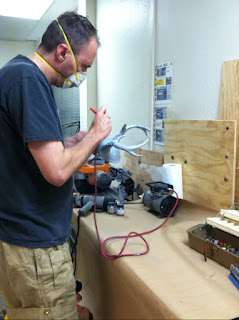More on the subject of pinking tools.
While trying to wake up this morning, I began with a search online in hopes of finding out more info on an upcoming 18th century event. I stumbled upon a discussion involving accuracy in trimming styles...and well, I had to fight the urge to rant.
I've opted for a mini rant here.
As you may well know, any time spent online searching for one topic, can become a journey of discovery...
I was eventually lead to a discussion regarding where and who to buy pinking tools and shears from. One comment in particular compared the van dyke pinked edge that modern pinking shears give, and the scallop edge we also see on historical examples.
This person proclaimed that a "pointy zig zag" (we will continue to call it by it's proper historical term, the van dyke), was not historically accurate, and that "only scallops were seen"...
LIES!
May I direct your attention to my previously posted image of the very real 18th century diagram of pinking tools, with both van dyke and scallops galore(!):

AND, this extant example of a sleeve with ruched trim pinked in the van dyke style:

Many thanks to Jessamyn's Regency Costume Companion blog for the above image and the following description:
"Period pinking was performed with a device that looks like a curved chisel with scalloped edges. Patterns varied, but the most common were tiny little curves or zigzags that combined in an arch or half-circle...examples of period pinking from Historical Fashion in Detail...the second (above) from the 1760s (but made from a silk of the 1740s)."
The only thing I see wrong with using modern pinking shears to achieve the desired effect, is that the points are not deep enough. Perhaps that is my own personal taste along with what I have seen so far in antique examples. Still, if one is willing to chop through yards of fabric and have sore hands and wrists from the modern tools, my hat is off to them for their effort. It still has a pleasing look that at least telegraphs the correct intent behind the styling of the ensemble as a whole. These vintage pinking tools are not easy to find and when we do, they come at a hefty price 90% of the time.
Stepping down from my soapbox now.
xoxo

























